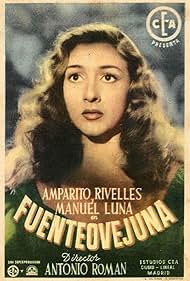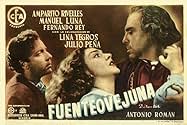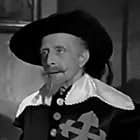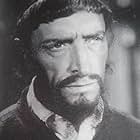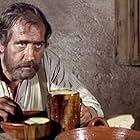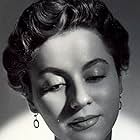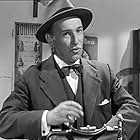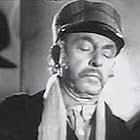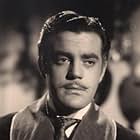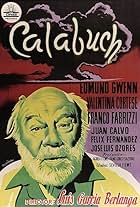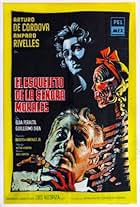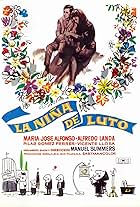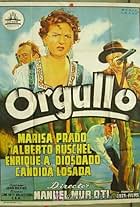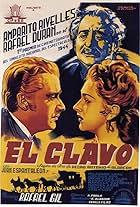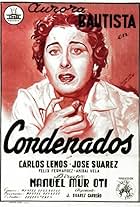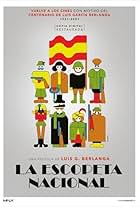A village bands together to kill its tyrannical Comendador, and when officials try to discover who is responsible, the villagers respond that the village committed the crime.A village bands together to kill its tyrannical Comendador, and when officials try to discover who is responsible, the villagers respond that the village committed the crime.A village bands together to kill its tyrannical Comendador, and when officials try to discover who is responsible, the villagers respond that the village committed the crime.
- Awards
- 1 win
Photos
Amparo Rivelles
- Laurencia
- (as Amparito Rivelles)
Manuel Guitián
- Alonso
- (as M. Guitián)
José Evelio Álvarez
- Juan Rojo
- (as José E. Álvarez)
Storyline
Did you know
- ConnectionsRemade as Font-aux-Cabres (1962)
Featured review
Rapid change took place in Spain in the years between the historical incident at Fuenteovejuna in 1476 to the writing of Lope's play in 1614. In that time, Spain united under the Habsburgs and become a world superpower with the discovery of the New World. At the time of Lope's writing, Spain was still in the midst of a Siglo de Oro ("Golden Century"), which saw growth in all fields of the arts and academics. In 1469, seven years before the events at Fuenteovejuna, Princess Isabella I of Castile (Lina Yegros) married Prince Ferdinand II of Aragon (Julio Peña) . With their marriage, the two major kingdoms of Spain-Castile and Aragon-were joined. This marriage would later ensure the successful completion of the Christian Reconquista of Spain from the Muslim Moors. When Isabella ascended the throne upon the death of her half-brother, Enrique IV, in 1474 , Alfonso V of Portugal crossed into Spain in order to secure the throne for Juana, Princess of Castile, the daughter of Enrique. Diego Pacheco , the Marquis of Villena , and his followers maintained that Joanna la Beltraneja , daughter of Henry IV, was the rightful queen . King Alfonso V of Portugal invades Castile to claim the throne . In May 1475, Alfonso and his army crossed into Spain and a long and bloody war for the Castilian succession then took place , such as : battle of Albuera and the decisive naval Battle of Guinea . At the Battle of Toro, two years later, Isabella and Ferdinand's forces defeated the forces of Alfonso and Juana. The same year, Ciudad Real was attacked by knights of the Order of Calatrava under the leadership of its Grand Master, 20-year-old Rodrigo Téllez Girón , who supported the claims to the throne by Alfonso and Juana. The city was of strategic importance due to its location near the border of Castile. The film opens in Almagro at the home of the Grand Master of the Order of Calatrava, Rodrigo Téllez Girón (Carlos Muñoz) . Here, a commander of the order, Fernán Gómez de Guzmán (Manuel Luna) , urges his superior to seize the town of Ciudad Real in the name of Juana and Alfonso of Portugal. The village and villagers of Fuenteovejuna are introduced by their Major Esteban (Manuel Kayser) . The Commander enters and attempts to take two of the women, Laurencia and Pascuala, back to his castle, but they resist and escape. King Ferdinand and Queen Isabella discuss the capture of Ciudad Real and vow to retake it . Later, two young lovers, Laurencia (Amparo Rivelles) and Frondoso (Fernando Rey) , meet in the forest. When the Commander approaches, Frondoso hides and watches as the Commander attempts to force himself on Laurencia. As the Commander has put down his crossbow, Frondoso steps out and takes it. As Laurencia escapes his grasp, Frondoso points the crossbow at the Commander, leaving with only the crossbow as the Commander curses both of them. It was during this invasion that Commander Gómez de Guzmán was killed by the villagers of Fuenteovejuna after he treated them poorly. After no single guilty party was found, Ferdinand pardoned the villagers from Fuenteovejuna.
This jingoist flick attempts to glorify and praise the tenacity and heroism of a village , Fuenteovejuna , showing their bravura and comradeship . As a village bands together to kill its tyrannical Comendador, and when officials try to discover who is responsible, the villagers respond that the village committed the crime. A well pace movie with nice narrating structure taken from American films , being professionally made and with hundreds of extras . The flick is marred by overacting , most of them play similarly to stage actors ; as the influence of the theater in players results to be extreme and embarrassing . Class struggle is one of the key concepts as there is a large gap between those in power and those without, namely farmers and peasants. The commander holes up the town with his power and wealth. Only as a collective are they able to fight back. Women's rights are another major theme, surprising as it may be for the time of this writing. The commander has taken the city as his personal harem. Once the attempted rape occurs with Laurencia, his downfall begins. It is Laurencia that encourages the town to rise against the Commander and the women that take the lives of officers. An additional theme as is tradition versus progress. The cast is pretty good with familiar faces at the time , such as : Carlos Muñoz, Lina Yegros , Julio Peña , Manuel Luna , Félix Fernández, Arturo Marin , Rafael Calvo, Conrado San Martín , and Eduardo Fajardo . Besides , the relief comical with touches of simple humor by excellent comedian Tony Leblanc . This is one of the best of 40's productions exalting the Spanish heroism and solidarity . There are several books that Lope de Vega could handle to document his drama: From Alfonso de Palencia, what is referred to in the Hispaniensian Gesta, From Frey Francisco de Rades y Andrada, in his Chronicle of the Three Orders and Knights of Santiago, Calatrava and Alcántara , from 1572. One of the versions most similar to those of Lope's text,11 preserved in the National Library of Madrid; Of Father Mariana, in his General History of Spain (1601), which coincides with Rades in underlining the tyranny of the Commander and his addiction to the Portuguese cause of Juana la Beltraneja, contrary to Isabel's faction. In the book Casos raros de Córdoba , from the Library of the Royal Academy of History.
Motion picture was well directed by Antonio Román , an uneven filmmaker , here at his best . Antonio Román surprises us with a historical film plenty of feats , adventures and heroic deeds . Román was Spain's most celebrated filmmaker , wrote a lot of of movies and directed a few short documentaries and went on to become one of the managers of the Cooperativa Cinematográfica Castilla . His film debut was a documentary , ¨La Ciudad Encantada¨. And subsequently his first full length film was 1941's "Escuadrilla" (Squadron), it was made in collaboration with Raza's José Luis Sáenz De Heredia . Later on , he directed various dated historical dramas as the biographic ¨Lola Montes¨ , and ¨Lópe De Vega's Fuenteovejuna¨ . And notorious adaptations : ¨Shakespeare's Fierecilla Domada¨,¨ Buero Vallejo's Madrugada¨, ¨Angel Maria Lera's Clarines Del Miedo¨. Furthermore , several dramas as ¨Pacto De Silencio¨ , ¨La Vida Encadenada¨ and ¨Intriga¨. And he made some Folkloric films . Soon after , he went on writing reviews and directing films throughout the '60s and into the 70s , although his output slowed . In 1970, he was fired from the set of "Ringo Del Nebraska", after having filmed less than 10%, because the producer did not like his slow and meticulous pace. He was replaced by Mario Bava, his friend and protégé , in fact Román wrote "Planet of the Vampires" , out of respect for Román, Bava refused to accept credit on the film. Rating : 6.5/10.
This jingoist flick attempts to glorify and praise the tenacity and heroism of a village , Fuenteovejuna , showing their bravura and comradeship . As a village bands together to kill its tyrannical Comendador, and when officials try to discover who is responsible, the villagers respond that the village committed the crime. A well pace movie with nice narrating structure taken from American films , being professionally made and with hundreds of extras . The flick is marred by overacting , most of them play similarly to stage actors ; as the influence of the theater in players results to be extreme and embarrassing . Class struggle is one of the key concepts as there is a large gap between those in power and those without, namely farmers and peasants. The commander holes up the town with his power and wealth. Only as a collective are they able to fight back. Women's rights are another major theme, surprising as it may be for the time of this writing. The commander has taken the city as his personal harem. Once the attempted rape occurs with Laurencia, his downfall begins. It is Laurencia that encourages the town to rise against the Commander and the women that take the lives of officers. An additional theme as is tradition versus progress. The cast is pretty good with familiar faces at the time , such as : Carlos Muñoz, Lina Yegros , Julio Peña , Manuel Luna , Félix Fernández, Arturo Marin , Rafael Calvo, Conrado San Martín , and Eduardo Fajardo . Besides , the relief comical with touches of simple humor by excellent comedian Tony Leblanc . This is one of the best of 40's productions exalting the Spanish heroism and solidarity . There are several books that Lope de Vega could handle to document his drama: From Alfonso de Palencia, what is referred to in the Hispaniensian Gesta, From Frey Francisco de Rades y Andrada, in his Chronicle of the Three Orders and Knights of Santiago, Calatrava and Alcántara , from 1572. One of the versions most similar to those of Lope's text,11 preserved in the National Library of Madrid; Of Father Mariana, in his General History of Spain (1601), which coincides with Rades in underlining the tyranny of the Commander and his addiction to the Portuguese cause of Juana la Beltraneja, contrary to Isabel's faction. In the book Casos raros de Córdoba , from the Library of the Royal Academy of History.
Motion picture was well directed by Antonio Román , an uneven filmmaker , here at his best . Antonio Román surprises us with a historical film plenty of feats , adventures and heroic deeds . Román was Spain's most celebrated filmmaker , wrote a lot of of movies and directed a few short documentaries and went on to become one of the managers of the Cooperativa Cinematográfica Castilla . His film debut was a documentary , ¨La Ciudad Encantada¨. And subsequently his first full length film was 1941's "Escuadrilla" (Squadron), it was made in collaboration with Raza's José Luis Sáenz De Heredia . Later on , he directed various dated historical dramas as the biographic ¨Lola Montes¨ , and ¨Lópe De Vega's Fuenteovejuna¨ . And notorious adaptations : ¨Shakespeare's Fierecilla Domada¨,¨ Buero Vallejo's Madrugada¨, ¨Angel Maria Lera's Clarines Del Miedo¨. Furthermore , several dramas as ¨Pacto De Silencio¨ , ¨La Vida Encadenada¨ and ¨Intriga¨. And he made some Folkloric films . Soon after , he went on writing reviews and directing films throughout the '60s and into the 70s , although his output slowed . In 1970, he was fired from the set of "Ringo Del Nebraska", after having filmed less than 10%, because the producer did not like his slow and meticulous pace. He was replaced by Mario Bava, his friend and protégé , in fact Román wrote "Planet of the Vampires" , out of respect for Román, Bava refused to accept credit on the film. Rating : 6.5/10.
Details
- Release date
- Country of origin
- Language
- Also known as
- Il tiranno di Castiglia
- Production companies
- See more company credits at IMDbPro
- Runtime1 hour 14 minutes
- Color
- Sound mix
- Aspect ratio
- 1.37 : 1
Contribute to this page
Suggest an edit or add missing content

